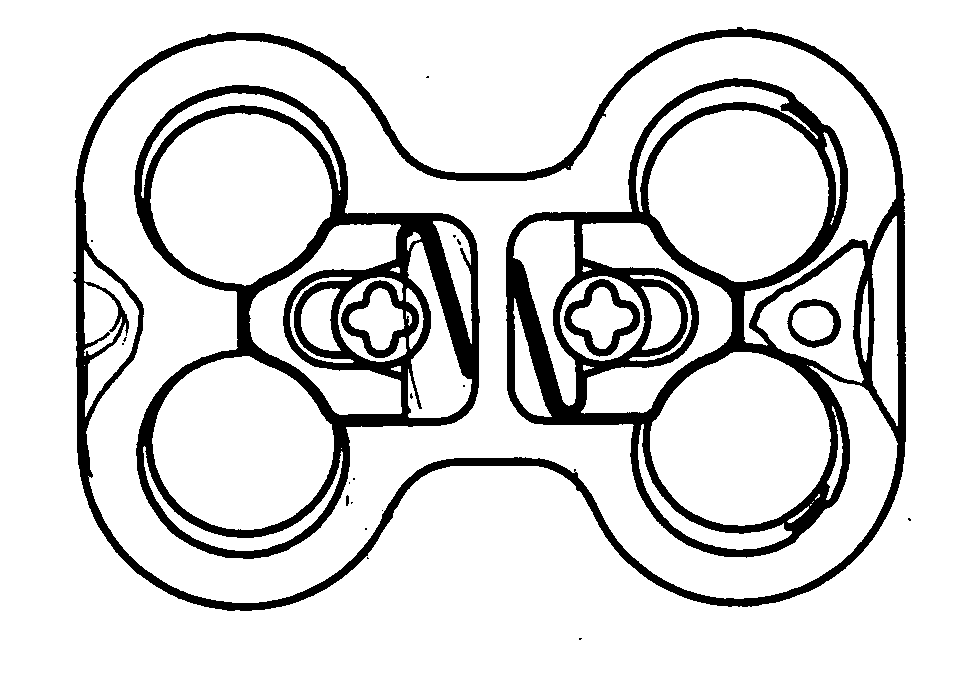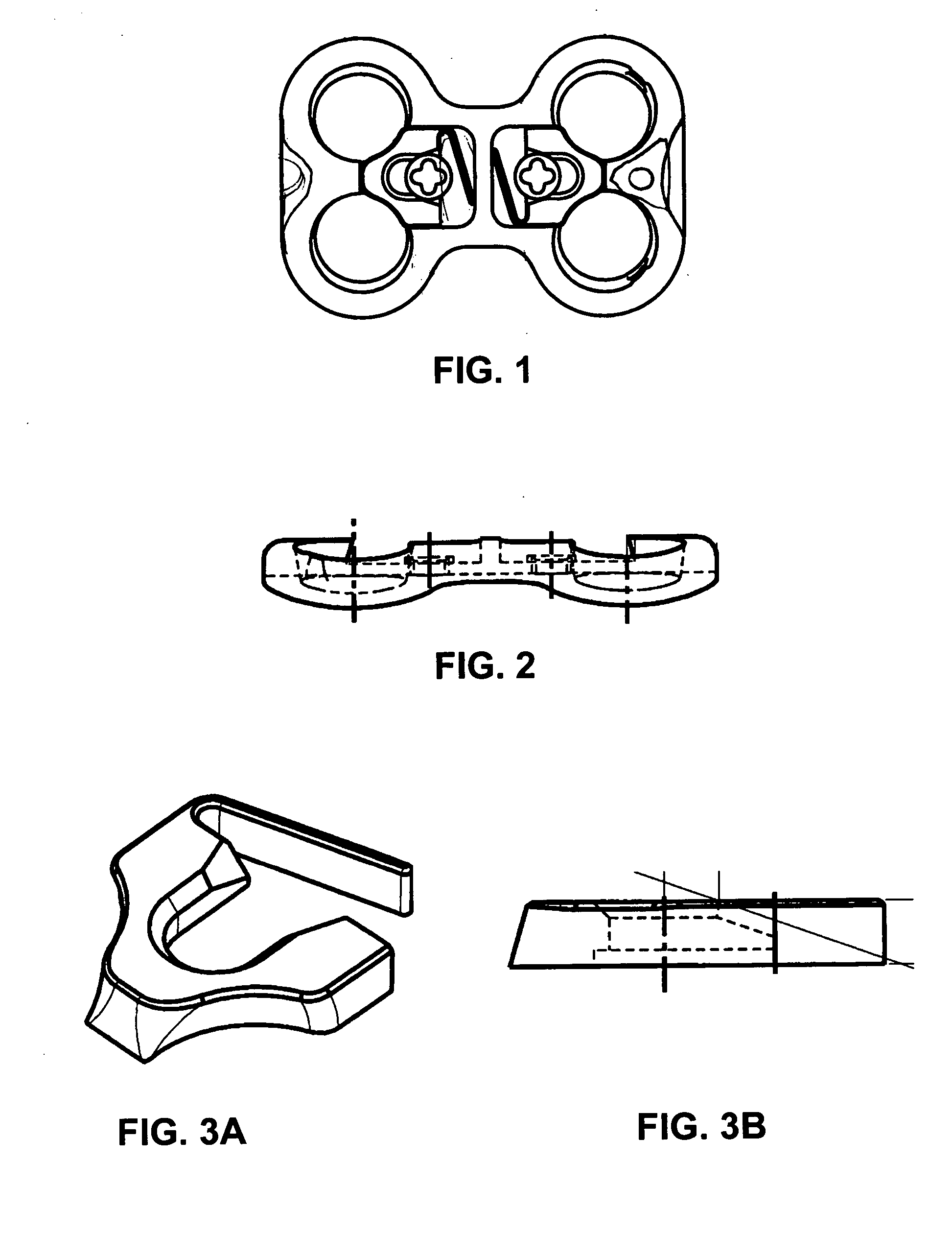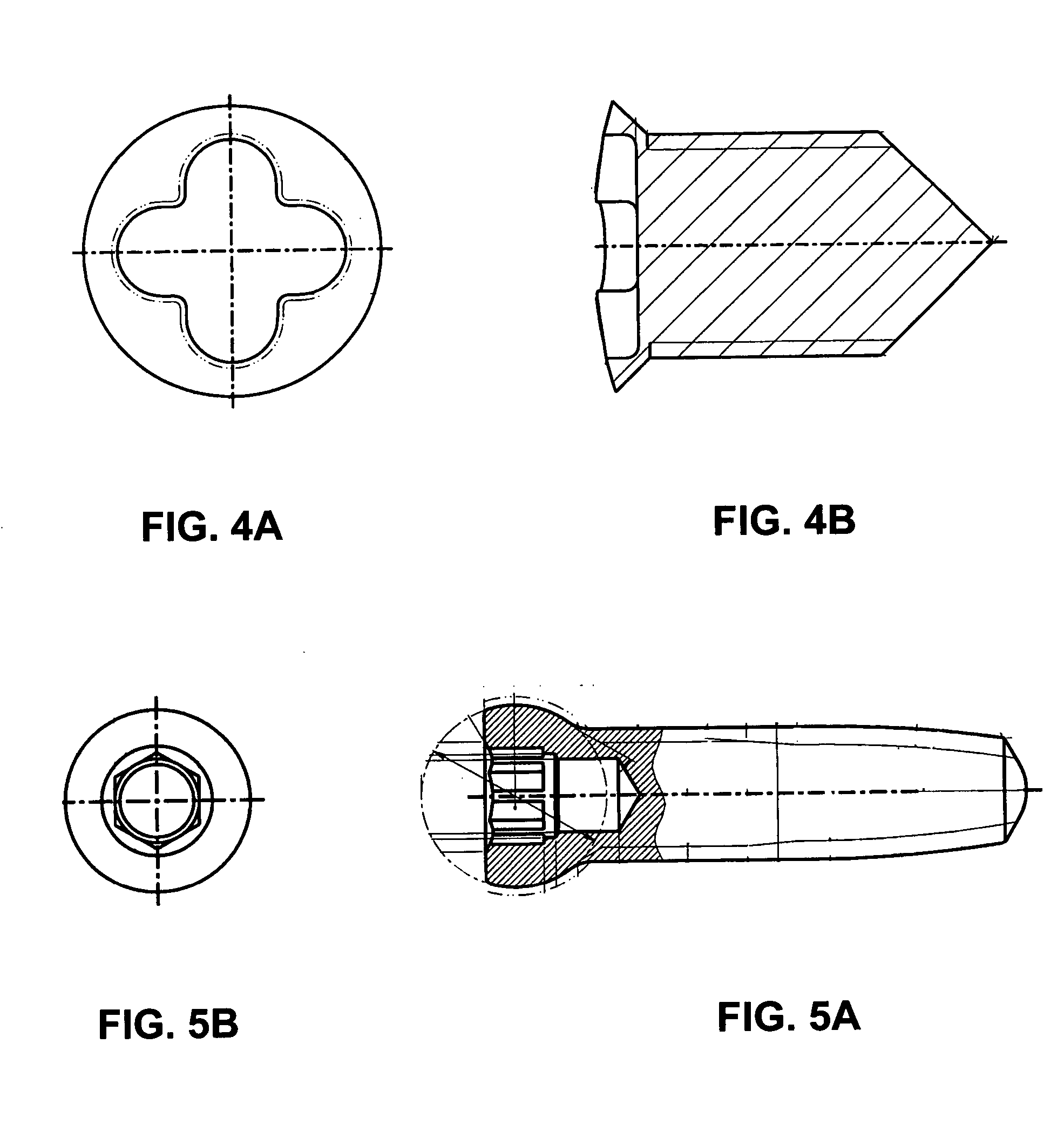Bones and bony structures are susceptible to a variety of weaknesses that can affect their ability to provide support and structure.
The
cervical spine has presented the most challenges for doctors, partially due to the small size of the vertebrae and the spacing between adjacent vertebrae.
These devices caused many complications and involved significant risks.
In addition to the risks of surgically applying
bone fixation plates, other complications arose.
Commonly, these problems involve loosening and failure of the hardware.
Two common failures are the breakage of the plates, and the backing out of the screws into soft tissues of the patient's body.
The backing out of the screws is typically a result of the screws failure to achieve a sufficient purchase in the bone, although the stripping of the screws has also been known to cause this problem.
Regardless of the cause of the hardware failures, a surgeon must repair or replace the broken parts, which requires undesirable invasive procedures.
However, the backing out of screws remained a problem.
However, the shortened screw is typically unable to achieve a sufficient purchase in the bone.
Shortened screws often provide very little holding power and inadequate tactile feedback to the surgeon.
While the use of longer screws can provide bicortical fixation, this method also has its drawbacks.
Primarily, long screws increase the chances of interference with each other when they are screwed into bony tissue at an angle.
However, it is common for the bone grafts to experience compression, which separates at least one of the adjacent vertebrae from the bone graft.
Cervical plates that employ long screws do not allow for sufficient movement of the vertebrae to accommodate the compression of the bone graft, because the purchase of the screws is too great.
Thus, the vertebrae cannot move and are unable to adjusting to the compression of the bone graft.
However, this method of securing screws often becomes bulky, resulting in a large and undesirable profile.
For instance, the use of a c-ring that can expand as the
fastener head is inserted requires additional components and
assembly time to form a plate.
Moreover, multi-component designs may lose their ability to retain a
fastener over time due to material failure, relaxation, or the like.
Additionally, multi-component configurations may not provide sufficient ability to
lag the plate to the
vertebral body.
One additional drawback of many designs is that they add to the overall height of the plate.
For example a plate design having a high overall height or a receptacle design that does not prevent screw backout may cause a patient to suffer from dysphasia.
Ultimately, the screw or plate may irritate or wear through neighboring tissue.
In addition, many of these plates were not designed to allow for the locking of all of the screws, which left some of the screws susceptible to backout caused by tiny vibrations, or micromotion.
However, this led to the small parts falling off and getting lost.
In addition, the smaller parts are fragile and require special instruments in order to insert or manipulate them.
In addition, because of their small size, incorrect placement relative to the axis of the plate often causes sharp and jagged shavings to be formed as a locking screw contacts an improperly seated bone screw.
Prior attempts at increasing the screw purchase have resulted in risky procedures, or an insufficient ability to adapt to movement.
Attempts and decreasing the profile of bone fixation plates have resulted in lost parts, or insufficient purchase.
 Login to View More
Login to View More  Login to View More
Login to View More 


